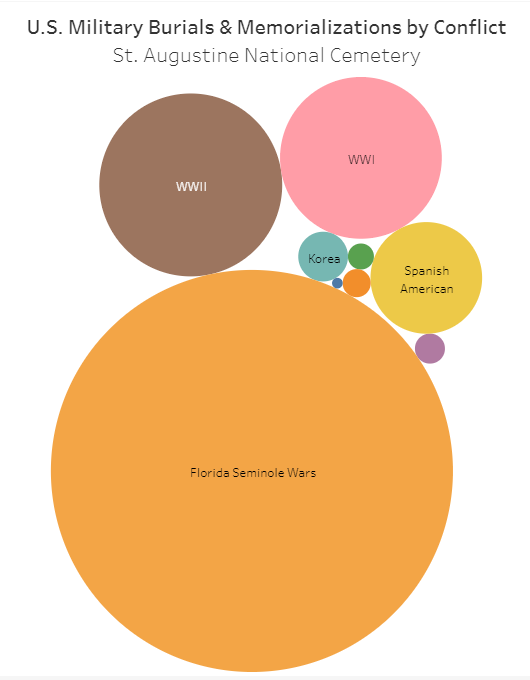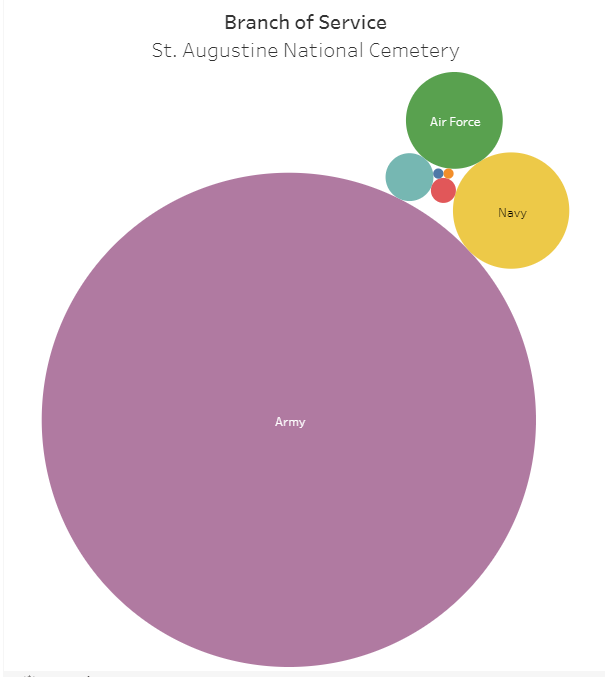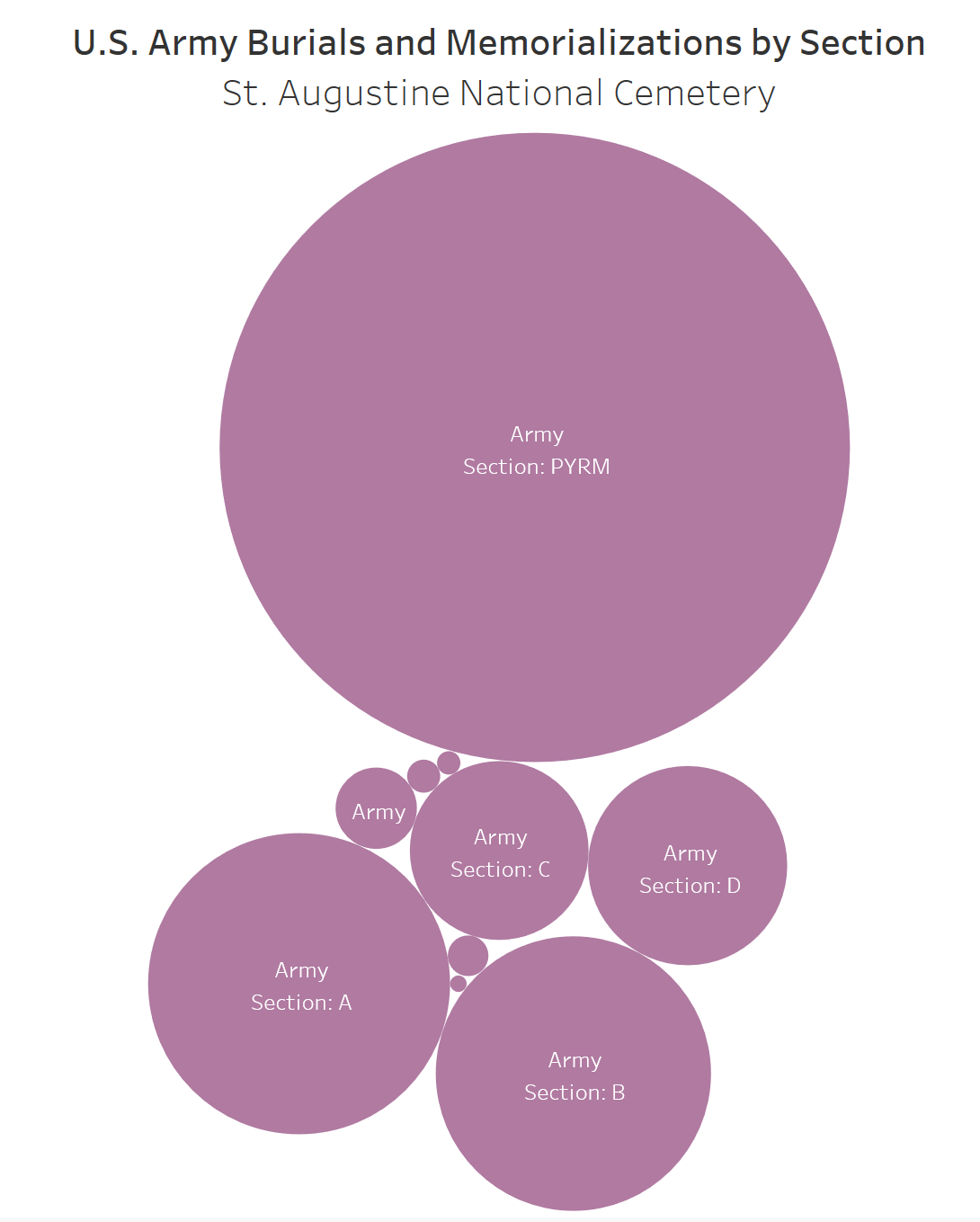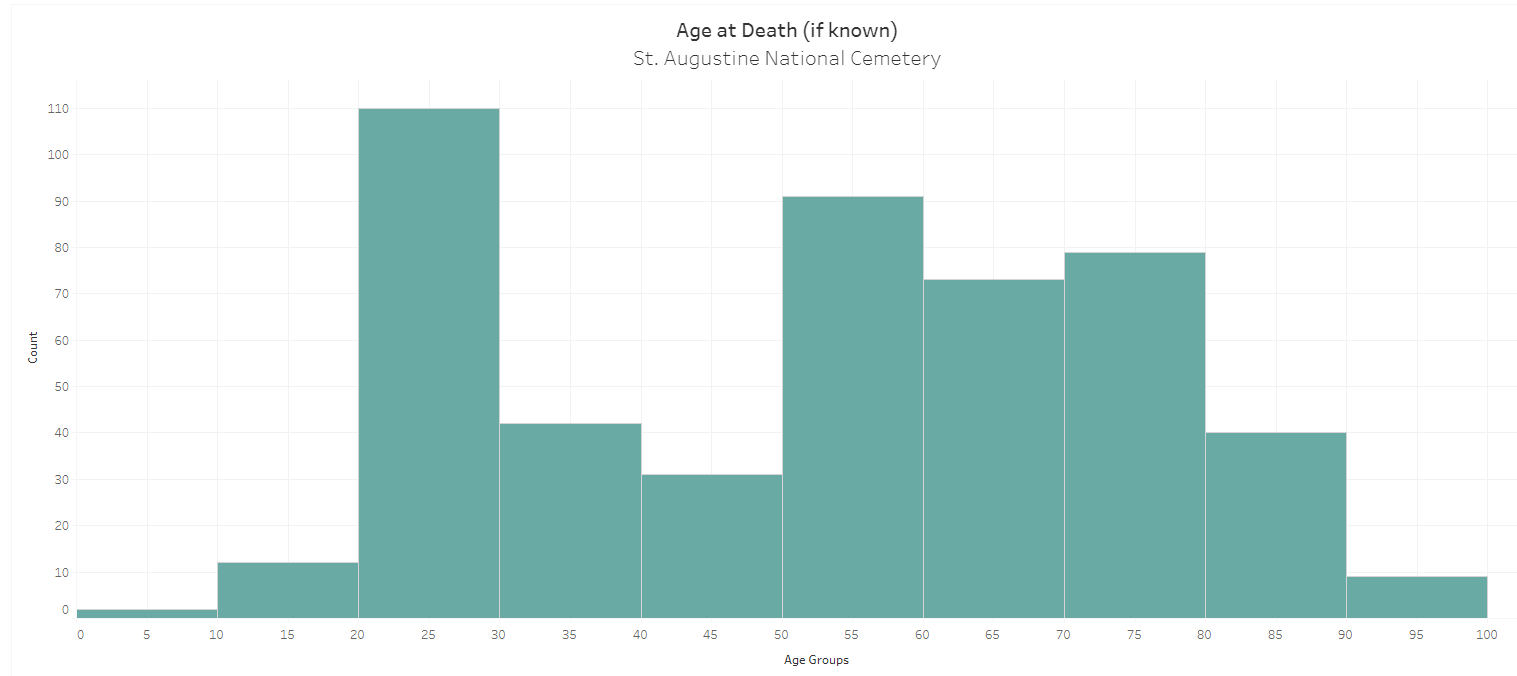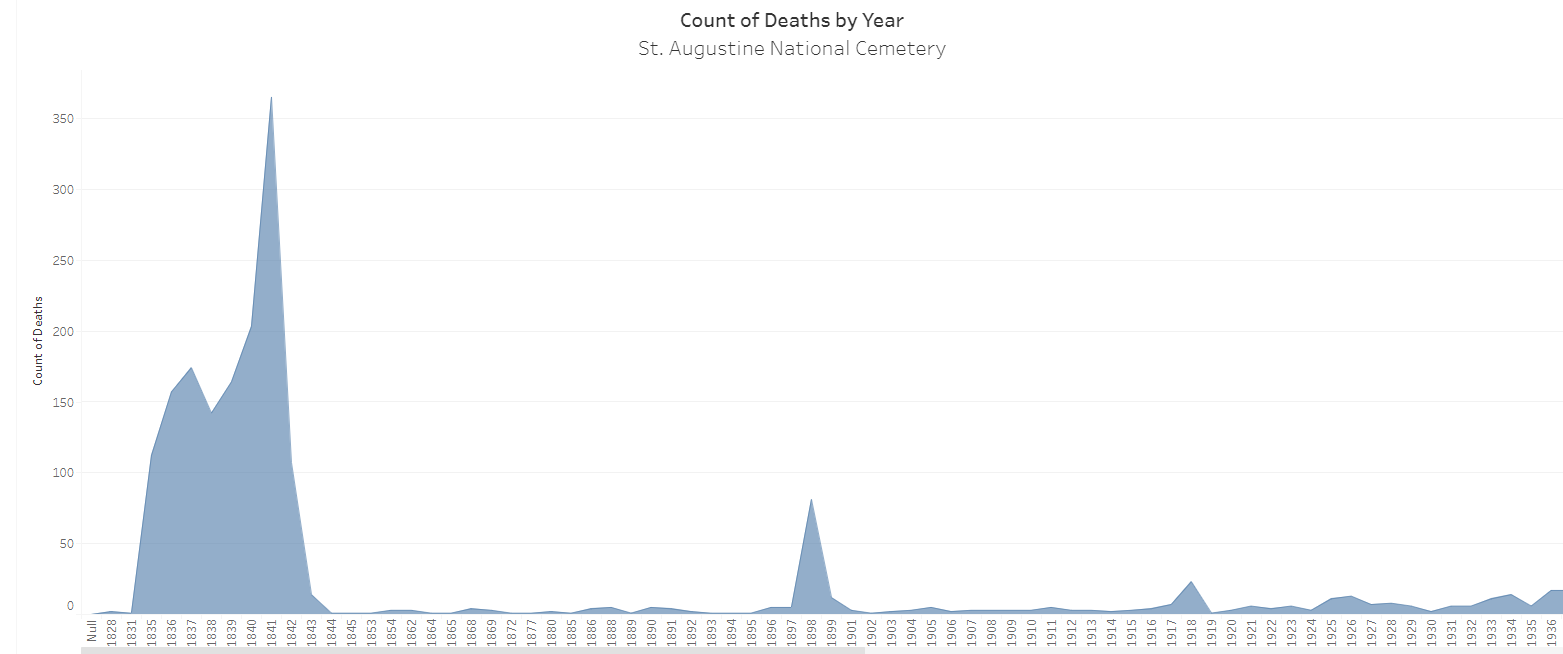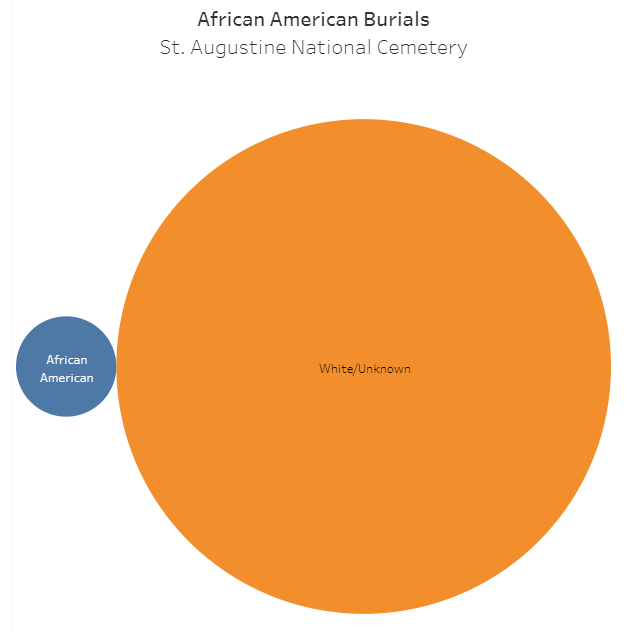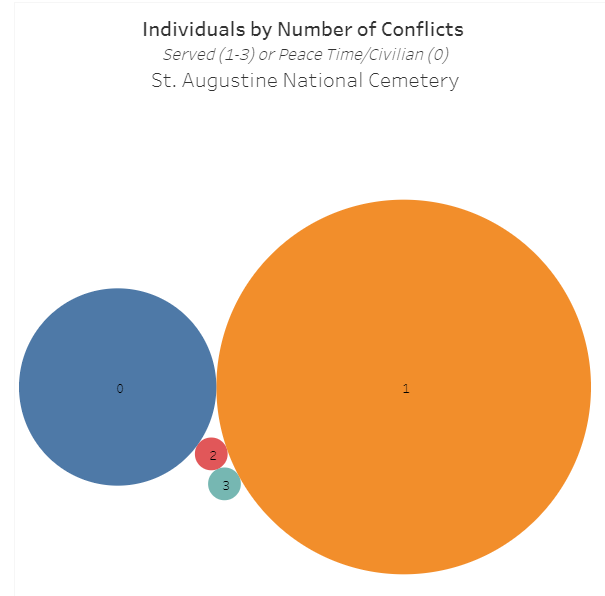VLPedia
UCF Veterans Legacy Program Encyclopedia
UCF Veterans Legacy Program Encyclopedia
The following items are the first entries in what will become a wiki-style encyclopedia of information. The current entries include descriptions of key battles in the Second Seminole War, a data file of information on interments in St. Augustine National Cemetery, and links for CLIO tours of Early Second Seminole War sites and St. Augustine's military history and cemetery.
fullscreenExpand All fullscreen_exitCollapse All-
listSecond Seminole War Battles
As part of its 2019 research, University of Central Florida students and faculty in the Veterans Legacy Program (VLP) started a project they called VLPedia. This project stemmed from work on the Second Seminole War soldiers buried at St. Augustine National Cemetery. In the course of this study, researchers recognized that there are few digital sources on that conflict. They decided, in order to better tell the stories of the soldiers buried in St. Augustine, to create digital resources connected to the key battles and people associated with the conflict. The articles included here represent the early fruits of this labor. At this point, VLPedia is still in its developmental stages. Consequently, the entries do not have a standard format. In future years, if the project matures as anticipated, a standard format will be chosen and more entries will be created.
Battle of Caloosahatchee (PDF)
Dade's Battle (PDF)
Battle of Okeechobee (PDF)
Battle of Wahoo Swamp (PDF)
Battle of the Withlacoochee (PDF)
-
listSt. Augustine National Cemetery Interment List
The St. Augustine National Cemetery Interment List is an expansion of the interment data provided by the National Cemetery Administration (NCA). New names of individuals found through a careful examination of the St. Augustine National Cemetery’s interment cards on Ancestry.com were added to the list. Many of these were spouses, children, and soldiers who died during the Second Seminole War and who were memorialized by the Dade Monuments.
St. Augustine National Cemetery includes almost two hundred years of burials, with the first burial recorded for Second Lieutenant Horace Smith on January 8, 1828, and the last one (as of April 2020), for Gregory A. Moore on May 28, 2019. The interment list shows that 2,708 individuals have been buried or memorialized at this site.
St. Augustine National Cemetery Interment List (PDF) -
listSt. Augustine National Cemetery Interment Visualizations
Who’s Buried/Memorialized at
St. Augustine National Cemetery?
A VLP Data Visualization and Digital ProsopographyThe 21st century is the age of Big Data. What constitutes “big data” for historians researching the lives of Veterans buried and/or memorialized in national cemeteries? “For us, as humanists,” write the authors of The Historian’s Macroscope: Big Historical Data, “big is in the eyes of the beholder. If it’s more data than you could conceivably read yourself in a reasonable amount of time, or that requires computational intervention to make new sense of it, it’s big enough!”
For this VLP-sponsored research project we have extracted biographical and military service data from 2,707 US National Cemetery Interment Control Forms associated with individuals buried and/or memorialized at St. Augustine National Cemetery. See below to explore the summarized data for every individual, and view the associated interment forms that have been digitized and made publicly accessible courtesy of Ancestry.com in partnership with the Department of Veterans Affairs/National Cemetery Administration (VA/NCA).
What can this biographical data – aggregated, analyzed, and visualized to reveal hidden patterns – tell us about the community of Veterans buried and memorialized at St. Augustine National Cemetery? How might we use the patterns this data reveals to create a digital prosopography (or collective biography) of those interred at St. Augustine? The visualizations below, created with a tool called Tableau Public, represent our initial findings and suggest intriguing possibilities for further research. Please click on the images to access the interactive visualizations.
US Military Burials & Memorializations by Conflict
This visualization shows US Military Burials & Memorials by Conflict, based on interment form data for St. Augustine National Cemetery.
Why are there so many burials associated with the Seminole Wars? The numbers are skewed toward the Seminole War era (1835-42) because the Dade Pyramids – named in honor of Maj. Francis Dade and the 108 men who perished under his command – cover burial vaults long believed to contain (as stated on the original plaque) “the individually unidentified remains of 1468 soldiers of the Florida Indian Wars.” New cemetery research indicates that as few as 150 bodies are interred in the vaults, but interment control forms count all of the Seminole War Veterans memorialized by the Dade Pyramids, even if they are not buried in the cemetery.
Branch of Service
This visualization shows the distribution of burials and memorializations at St. Augustine National Cemetery by Branch of Service.
What explains the predominance of US Army burials/memorializations relative to those associated with other branches? This is partly due to the US Army’s stature among the branches during the Seminole Wars (1835-42), when the St. Augustine military cemetery was first opened to Veterans beyond the local post, and partly due to the memorialization of nearly 1500 Seminole War casualties – all them officers, surgeons, or soldiers in the US Army – by the Dade Pyramids and nearby obelisk.
US Army Burials & Memorializations by Section
This visualization shows US Army Burials and/or Memorializations by Section within St. Augustine National Cemetery. While the Dade Pyramids (abbreviated PYRM) represent the largest grouping of US Army Veterans at St. Augustine, burials of Army Veterans can be found in every section of the cemetery. See site map for key. The three pyramids [PYRM] are shown as squares with Xs near the Dade Monument.
What explains the spatial distribution of US Army burials throughout the cemetery? US Army Veterans have been buried and memorialized at St. Augustine since the early nineteenth century. As the cemetery expanded, new sections were opened, and the distribution of US Army Veterans reflects that expansion over time.
Age at Death (If Known)
This visualization shows the Age at Death (If Known) for US Military Veterans buried and/or memorialized at St. Augustine National Cemetery.
What explains the variations across decades, with a spike in the 20s and again in the 50-80 age range? The column for those Veterans aged 20-30 highlights the sacrifice of young men who died in service, their numbers multiplied by the nearly 1500 Seminole War casualties memorialized at the cemetery. The three tall columns showing those who died in their 50s, 60s, 70s (another data cluster) call our attention to Veterans who completed their service and lived to middle-age and beyond.
Count of Deaths by Year
This visualization shows the Count of Deaths by Year (If Known) for those buried in St. Augustine National Cemetery.
Which years stand out, and why? Most of the spikes align with major military conflicts:
- Seminole War (1835-1842)
- Civil War (1861-1865)
- Spanish American War (1898)
- World War I (1917-1918)
- World War II (1941-1945)
- Korea (1950-1953)
- Vietnam (1959-1975)
- Persian Gulf War (1990-1991)
- Afghanistan (2001-present)
- Iraq War (2003-2011)
African American Burials
This visualization shows the number or African American Burials relative to Whites/Unknown.
Why is the number of African American burials at St. Augustine noteworthy? Neither headstones nor interment control forms indicate race or ethnicity, thus obscuring the historical contributions of African Americans within the military and their significant presence within the national cemeteries. VLP-sponsored student research into census data and military records has allowed us to identify more than 100 African Americans buried and memorialized at St. Augustine. Further research will allow for more nuanced visualization of burials by national origin and ethnicity as well.
Individuals by Number of Conflicts
This visualization groups individuals buried or memorialized at St. Augustine National Cemetery by the number of military conflicts with which they were associated.
Why are so many individuals associated with zero conflicts? This grouping includes includes Veterans who served during peacetime, as well as civilians (spouses, children) who were buried with a Veteran family member.
-
listCLIO Tours
These customized tours use UCF student-authored entries within the CLIO heritage tour app for use on the road or in the classroom. The tours incorporate National Cemeteries and other related military sites into educational driving routes.
Early Second Seminole War
St Augustine Military History and Cemetery
